How one Southern California golf course gives back to wildlife
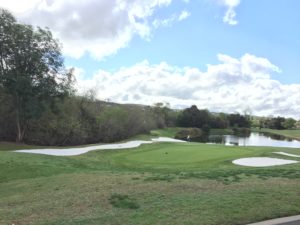
Five-mile streambed supports rich ecosystem
Golf courses are criticized for reducing valuable natural lands and for their high-water consumption. Some are making an effort to “give back.” We want to spotlight Coto de Caza Golf Course in Southern California for its commendable efforts to protect and enhance the habitat value of its property. Recently we had the opportunity to conduct a site visit as part of its re-certification application as an Audubon Cooperative Sanctuary program for golf courses. The status was first granted to their property in 2012 and needs to be renewed every three years.
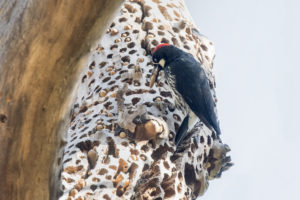
Acorn Woodpeckers need dead trees.
Photo by Peggy Honda
Much of the credit goes to horticulturalist, Terry L. Vassey, and Superintendent Shane Roth who protect the property’s five-mile streambed. Imagine a winding ribbon of oak, cottonwood and willow cooling and sheltering mountain-fed water while quietly supporting one of the ecologically richest habitat types in our region.
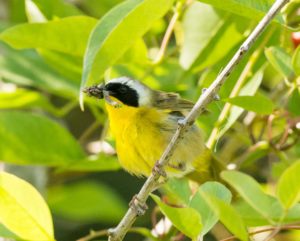
Common Yellow-throat consumes volumes of insects.
Photo by Sandrine Biziaux Scherson
We hope golfers pause to appreciate the chatter and drumming of woodpeckers, and the numerous songbirds such as the beautiful Common Yellowthroat that cast their love songs or scolding vocalizations on the air.
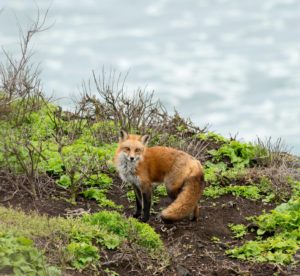
Red Fox, among other mammals, consume
unwanted rodents on the golf course.
Photo by Sandrine Biziaux Scherson
One amusing resident includes a bird of high conservation concern, the Oak Titmouse. Our attention was seized at several spots along the way by its peter-peter-peter song. The species appears to be doing well in the location. This is notable because apart from the abundance of oak, what enables the titmouse and other cavity-nesting birds such as woodpeckers to breed here is the presence of dead trees. Yes, dead trees. They are safely retained in out-of-play areas, and despite a persistent myth, are not a fire risk in this context.
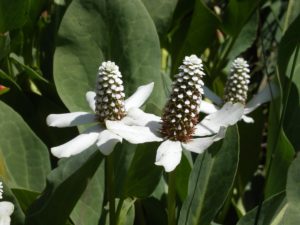
Rare wetland plant Yerba Mansa.
Photo by Calibas Wikimedia Commons
For both resident and migrating birds, as well as mammals and amphibians, this is a year-round source of water, food and shelter as they move along the vegetated corridor. More plant and wildlife species are found in riparian environments than in any other, and these habitats are vital to ensuring healthy watersheds. (It is for that reason, they are protected by strict government regulations.) Thanks to assistance from the California Native Plant Society, we identified one rare, native wetland plant, Yerba Mansa, at the edge of this streamed. It’s medicinal properties are reported to be many.
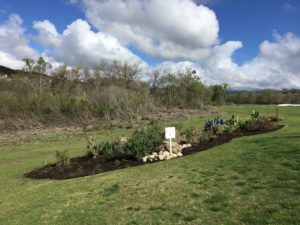
One of several pollinator gardens
Here’s more cause for applause. Several pollinator gardens and other out-of-play areas have been planted with native or climate-suitable vegetation. Nest boxes for the Western Bluebird, Wood Duck, and bats have been installed. State-of-the-art technology enables efficient water use. Almost all weeds are pulled by hand, and chemical use is kept to a minimum.
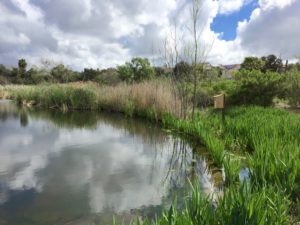
Buffers of natural vegetation at
water edges provide habitat
We applaud Superintendent, Shane Roth and Mr. Vassey for their good stewardship efforts and hope residents in Coto de Caza take pride in this vital natural resource in its community.


Connect
Connect with us on the following social media platforms.